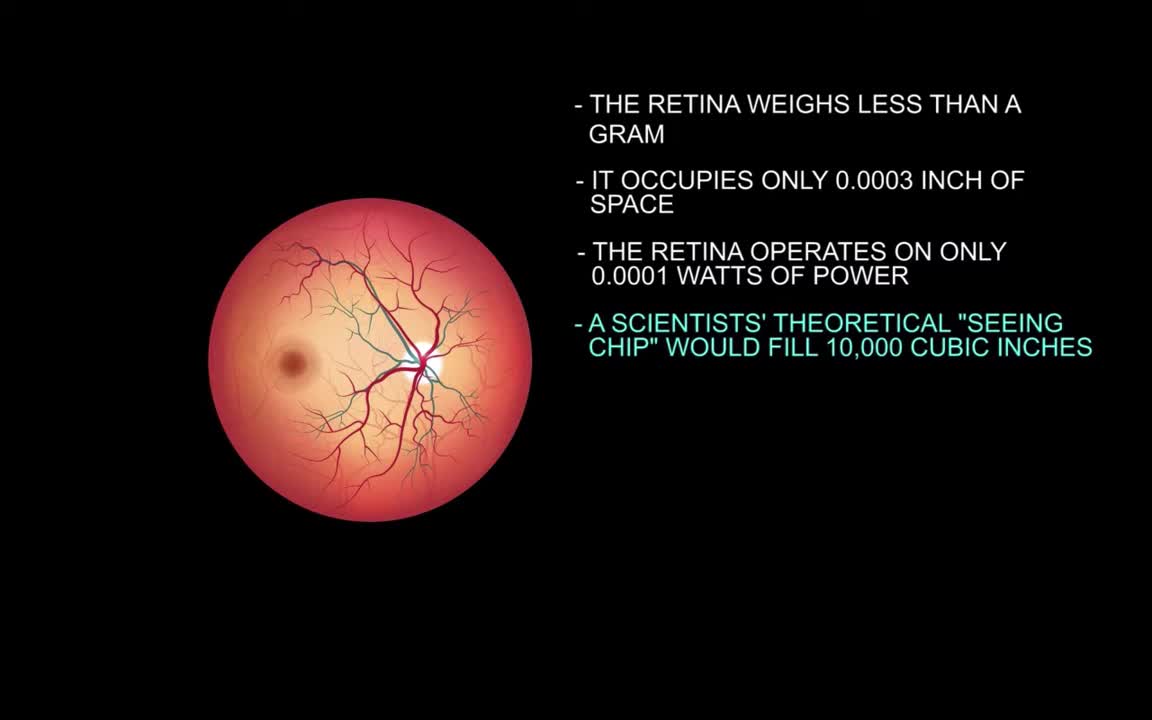Premium Only Content

Unthinking natural processes couldn't make an eye
One fascinating discovery in the study of modern ophthalmology (eye science) is that there are three almost imperceptibly tiny eye movements. These three, referred to as ‘tremors, drifts, and saccades’, are caused by minute contractions in the six muscles attached to the outside of each of your eyes. Every fraction of a second they very slightly shift the position of your eyeball, automatically, without conscious effort on your part, making sight as you know it possible.
Tremors — the tiniest and probably the most intriguing of these movements, continuously and rapidly wobble your eyeball about its center in a circular fashion. They cause the cornea and retina (front and back) of your eyes to move in circles with incredibly minute diameters of approximately 1/1000 (.001) of a millimeter, or .00004 inch.
An even more amazing characteristic of tremors is that the seemingly tireless muscles that produce them wobble your eye 30 to 70 times each second. If sound were involved, that would be fast enough to produce a low-pitched hum. Amazingly, on average, each of your eyes completes one million of these tiny circular motions in 5 1/2 hours. The number of tremors taking place in a lifetime is astronomical.
Even though tremors are not large enough to be visible without great magnification, you could not see properly without them.
For example, consider what would happen if these and all other eye movements stopped while you were staring at someone’s face. The light-sensing cells in your retina would quickly ‘stabilize’, and cease to send updated information to your brain, causing the image you perceive to fade into a uniform gray within seconds. If the person you were staring at smiled, their mouth, and only their mouth, would momentarily reappear out of a visual field of nothingness!
(This has been done in the laboratory,2, and was said to have looked like the smile of the Cheshire cat in Alice in Wonderland.)
The reappearance of only part of the face would happen because only the mouth moved, causing a momentary change in that part of the picture which the retina was seeing at the time.
Thus, continued change in the light projected on each retinal cell in your eyes is crucial for constant vision. Hence the need for tremors that God has made to supply the retina with a slightly shifting picture many times each second. Without the tremors, which are probably the most critical muscular phenomenon for normal vision, you would have to be constantly looking about or continuously altering the light on a subject to see anything for longer than a few seconds at a time. [From Darwin vs. the eye by Tom Wagner and video from youtube video The Human Eye Genius of God] The eye is not the product of unthinking natural forces but a loving intentional God. Learn to defend your faith at www.educateforlife.org.
-
 0:28
0:28
Sailor_C
4 years ago $0.06 earnedNATURAL BRIDGE
2322 -
 4:30
4:30
Cooking Lessons for Dad
4 years ago $0.02 earnedHow to Make Date Paste! A Natural, Healthy Sweetener!
303 -
 0:18
0:18
AyenC29
4 years agoNatural Stone
2041 -
 0:46
0:46
STLNutritionDoc
3 years agoNatural stress relief
59 -
 12:52
12:52
Games
4 years agoTrying to make another neon cat but I couldn't make it in time
15 -
 1:01
1:01
JoplinOutdoors
3 years ago $0.09 earnedNatural Tunnel - Missouri
82 -
 5:20
5:20
KTNV
3 years agoNatural Gas in Nevada
35 -
 1:10
1:10
Jonathanpong
4 years agoNatural ski resort
74 -
 1:56:37
1:56:37
Melonie Mac
9 hours agoGo Boom Live Ep 35!
48.5K13 -
 1:01:13
1:01:13
LFA TV
13 hours agoPRESIDENT TRUMP SIGNS LAKEN RILEY ACT | BASED AMERICA 1.29.25 6pm
59K7